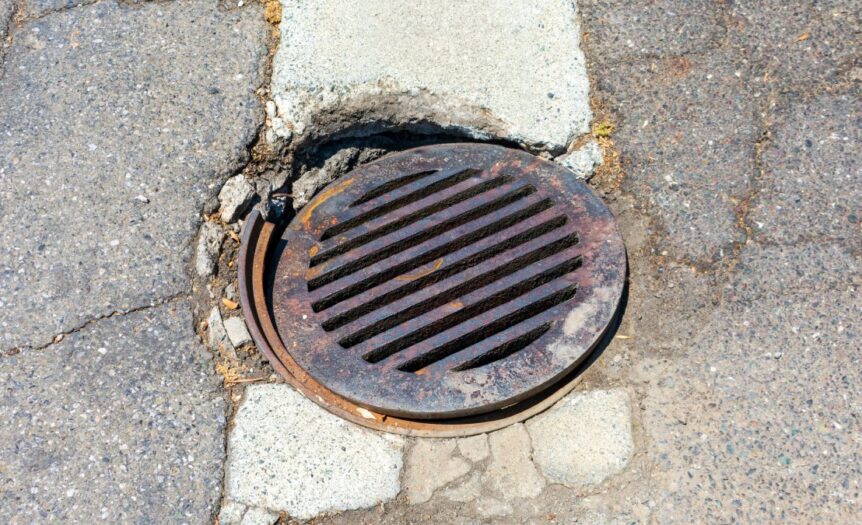Manhole covers are a part of our everyday surroundings—so much so that we often walk by them without a second glance. But when one is broken, the outcome can lead to costly, dangerous, and wide-reaching consequences.
From public safety risks to environmental repercussions, a damaged or neglected manhole cover is more than just a small inconvenience. Below, we explore the various consequences of a broken manhole cover and how communities can address them effectively.
The Economic Toll of Neglect
Ignoring the repair or replacement of broken manhole covers can rack up significant financial costs. Municipalities and local governments often bear the burden, spending substantial amounts of taxpayer dollars on reactive maintenance or damage settlements caused by preventable accidents. For instance, a broken or missing manhole cover can cause vehicular damage and lead to costly claims.
Drivers might suffer tire blowouts or suspension damage, which can amount to hundreds or even thousands of dollars per incident. Additionally, lawsuits filed by pedestrians injured near damaged manhole covers can further strain city budgets. Investing in early upkeep is far more economical than addressing the domino effect of neglect.
Environmental Consequences
Broken or missing manhole covers can contribute to pollution and other environmental challenges. They often serve as key components of stormwater and sewage management systems, and damage to them allows debris and contaminants to enter sewer networks. This can lead to blockages, overflows, and water pollution in local rivers or streams.
Furthermore, open manholes create an entry point for hazardous chemicals, endangering local ecosystems by contaminating soil and water sources. Keeping manhole covers functional and intact is an important step in minimizing environmental harm.
Damage to Daily Life and Infrastructure
Beyond individual safety and environmental concerns, damaged manhole covers disrupt community life and destroy infrastructure. Open or deteriorating manhole covers lead to slowed traffic flow, vehicle reroutes, and in some cases, full closures of key roadways.
Local businesses around affected areas may experience reduced foot traffic, leading to revenue loss. Similarly, disruptions to public transportation caused by manhole problems frustrate commuters and interfere with daily routines. A broken manhole cover is an isolated inconvenience in addition to a community-wide problem.
Taking Steps To Prevent These Issues
Timely intervention and proactive measures are key to avoiding the negative consequences listed above. Regular municipal inspections and swift repairs are the simplest steps to prevent hazards posed by broken manhole covers. Communities can advocate for better budgeting toward infrastructure maintenance, ensuring that funding is available before costly issues arise.
Public awareness also plays a huge role. When citizens report visible damage to covers, local authorities can act faster. Installing durable covers made from advanced materials is another effective strategy to reduce breakage and increase longevity. Prevention is always less expensive and less disruptive than managing manhole cover problems after they escalate.
The significance of manhole covers often goes underappreciated—until something goes wrong. Broken manhole covers come with steep consequences that negatively impact finances, safety, the environment, and entire communities. However, these challenges are avoidable with regular maintenance, intentional infrastructure investments, and strong community awareness.










 Deering Estate
Deering Estate
 Massage Envy South Miami
Massage Envy South Miami
 Calla Blow Dry
Calla Blow Dry
 My Derma Clinic
My Derma Clinic
 Sushi Maki
Sushi Maki
 Sports Grill
Sports Grill
 The Healthy Kitchen
The Healthy Kitchen
 Golden Rule Seafood
Golden Rule Seafood
 Malanga Cuban Café
Malanga Cuban Café

 Kathleen Ballard
Kathleen Ballard
 Panter, Panter & Sampedro
Panter, Panter & Sampedro
 Vintage Liquors
Vintage Liquors
 The Dog from Ipanema
The Dog from Ipanema
 Rubinstein Family Chiropractic
Rubinstein Family Chiropractic
 Your Pet’s Best
Your Pet’s Best
 Indigo Republic
Indigo Republic




 ATR Luxury Homes
ATR Luxury Homes


 2112 Design Studio
2112 Design Studio
 Hamilton Fox & Company
Hamilton Fox & Company
 Creative Design Services
Creative Design Services
 Best Pest Professionals
Best Pest Professionals
 HD Tree Services
HD Tree Services
 Trinity Air Conditioning Company
Trinity Air Conditioning Company
 Cisca Construction & Development
Cisca Construction & Development
 Mosquito Joe
Mosquito Joe
 Cutler Bay Solar Solutions
Cutler Bay Solar Solutions


 Miami Royal Ballet & Dance
Miami Royal Ballet & Dance
 Christopher Columbus
Christopher Columbus
 Pineview Preschools
Pineview Preschools
 Westminster
Westminster
 Carrollton
Carrollton
 Lil’ Jungle
Lil’ Jungle
 Frost Science Museum
Frost Science Museum
 Palmer Trinity School
Palmer Trinity School
 South Florida Music
South Florida Music
 Pinecrest Orthodontics
Pinecrest Orthodontics
 Dr. Bob Pediatric Dentist
Dr. Bob Pediatric Dentist
 d.pediatrics
d.pediatrics
 South Miami Women’s Health
South Miami Women’s Health

 The Spot Barbershop
The Spot Barbershop
 My Derma Clinic
My Derma Clinic




 Miami Dance Project
Miami Dance Project

 Rubinstein Family Chiropractic
Rubinstein Family Chiropractic
 Indigo Republic
Indigo Republic

 Safes Universe
Safes Universe
 Vintage Liquors
Vintage Liquors
 Evenings Delight
Evenings Delight





 Atchana’s Homegrown Thai
Atchana’s Homegrown Thai
 Baptist Health South Florida
Baptist Health South Florida

 Laser Eye Center of Miami
Laser Eye Center of Miami
 Visiting Angels
Visiting Angels
 OpusCare of South Florida
OpusCare of South Florida

 Your Pet’s Best
Your Pet’s Best





 HD Tree Services
HD Tree Services
 Hamilton Fox & Company
Hamilton Fox & Company


 Creative Design Services
Creative Design Services